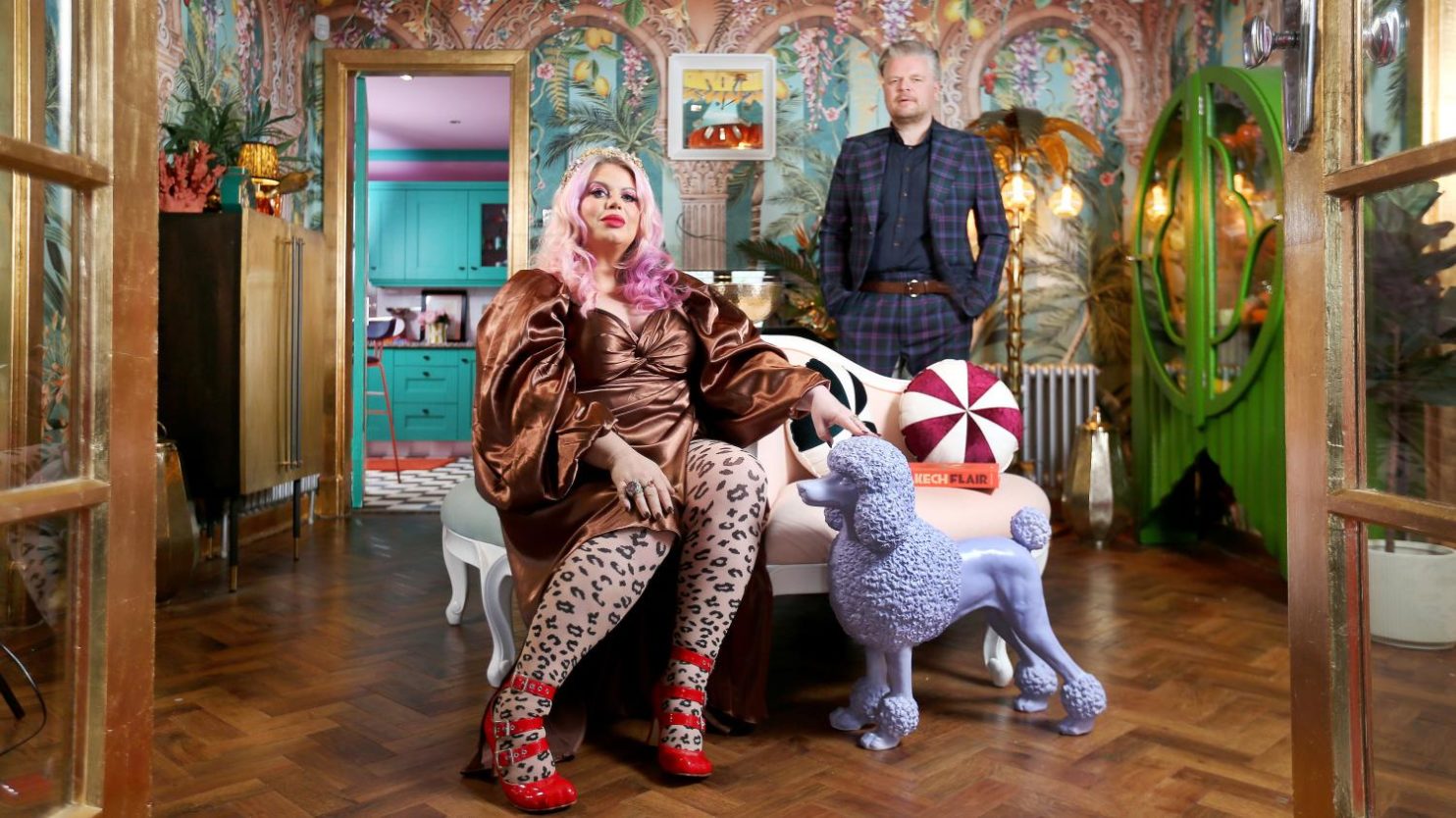Header Image: The Times, photographed by Lorne Campell/Guzelian. Make-up: Lauren Curtis
Generational Media Influence
Coming of age in the era of social media accompanied by the rise of influencers, I learned about the worlds of fashion and interior design through a screen. I did not have Cosmopolitan, Elle, or Vanity Fair magazines on my coffee table, instead I would scroll through my eerily well-curated explore page on Instagram for fashion inspiration, watch youtube creators, or HGTV for interior design.
The popularity and accessibility of social media and its influence have had an important factor in how I understand the worlds of fashion and interior design. While consuming these medias, I noticed that the two worlds never seemed too different from the other. For example, the 60s brought big, colorful patterns into the wardrobe, and into the home. In the following decade, the 80s had the rise of neon and geometricity that was present in home design, and in fashion. Now begs the question: What influences the other more; fashion or interior design? What came first; the chicken or the egg?
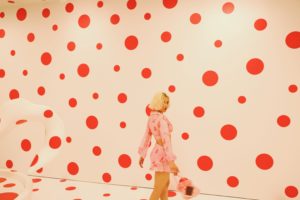 Internet Speed
Internet Speed
It should go without saying that the internet has an incalculable impact on our world and how we interact with it. In the case of the design world, whether that be interior or fashion, the internet has accelerated the transmission of trends, styles, and knowledge from the runway to the home. This can be attributed to a myriad of reasons including but not limited to; influencers on major social media platforms, formal advertisements of popular department stores on one’s social media feed, or as simple as directly putting information on an online public platform.
Everyone, however; cannot keep up with the fluctuating trends, especially with expensive elements such as furniture or kitchens. With fashion trends, they are somewhat easier to keep pace with even though they move faster than interior design trends due to the affordability of fashion over interior design. It is evident that the newest trendy sofa is going to retail higher than next season’s essential coat. This, and for several other reasons, is why interior design trends tend to have a longer life than their fashion counterparts. With the ease that the internet provides for the conveyance of trends and styles, it also helps consumers define their respective styles.
Micro + Macro
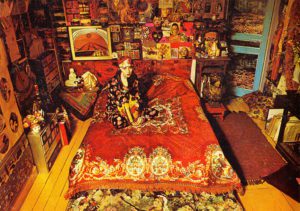
Image: Scan from 1970’s House by Terrance Conran
Building off the fact that fashion holds heavier influence on interior design, it can be inferred that this trickles down to a personal level, too. When investigating the influences on a macro level, it can be seen through Harold Linton, a famous author of Color Forecasting: A survey of international color marketing, that colors cycle for around two years in fashion circles and, in interior design, can survive for no longer than seven to twelve years. This is more relevant when discussing the macro level of influence between the worlds as this level of fashion is not centered on the consumer but more on the art of it.
Interior design and fashion are similar as they are both mediums through which individuals can express themselves so, it is logical that the two worlds work in conjunction with each other so well. One’s fashion sense most times reflects or is influenced by their home decor, or vice-versa. Through a micro-lens, someone who prefers to purchase their clothes second-hand is more likely to also have thrifted furniture. Conversely, someone who keeps up with all the fashion trends and harbors great insight into that world will have an interior design that will be high-end and tasteful to the times. The two worlds are driven by one’s lifestyle and the influence it has on their buying motivations.
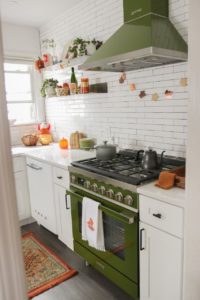 Moving into the Home
Moving into the Home
One of the innumerable effects of the pandemic is the turn towards focusing on the home, after all, that is where we spent more time than ever before. Although it is clear that fashion and interior design are two separate spheres, it is also clear that aspects of each bleed into each other: from textiles, color trends, and even designers.
Certain leaders of the fashion industry have created a homeware line that rhyme with their fashion taste. Ranging from kitchen appliances all the way to bedroom linens. Famous names who participate in this cross-over include Ralph Lauren, Gucci, and Louis Vuitton. This crossover shows how leaders in both fields speak the same language of texture, shape, color, line, etc. It should come as no surprise that renowned fashion designers are easily able to transfer their skills of fashion design to interior design as they use the same tools. Less often, interior designers will branch into the fashion world as it changes too frequently for good design to translate well and remain popular.
Image: Steffy’s Pros and Cons Blog
Effects of “IKEAization” 
Much like McDonaldization, IKEAization is the practice of creating a standard in home decor and fashion. This standard provides the same experience wherever you may go. Similarly, IKEAization provides the same fashion or decor product. An example of this are fast-fashion platforms such as Shein or Fashion Nova. Understanding the popularity of fast fashion and fast furniture helps to gain insight into the consumer’s prioritization of utility, comfort, functionality, and most importantly: convenience.
When examining these consumer trends, it is important to understand that most customers to these fast-fashion sites do not hold the same economic power as those who can keep up with the fashion world. The same could be said for those who have the privilege of shopping sustainably as those options are more often than not more expensive.
To reduce participation in IKEAization, there is a counter-movement to push for sustainable consumption of both fashion and home design. With this, there is a rise in thrift culture among younger people whose style encompasses all previous fashion cycles. With the resurfacing of 1970s fashion, thrifters can find apparel that compliments that trend sustainably through secondhand shopping. Now, companies are turning inwards to turn their production more sustainable to reduce their carbon footprint and accommodate the environmentally-conscious consumer.
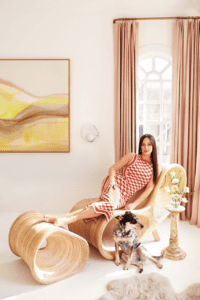 So, Who Wins?
So, Who Wins?
Fashion wins this game in my opinion as it holds a heavier weight on the world of interior design than the inverse. Mainly attributed to fashion’s fluid status of “what’s in and what’s out” and its relative affordability. Fashion and interior design trends have existed long before the internet as seen with the connection between the 60s colorful, big patterns that existed in both worlds, as well as the connection between the neon geometricity of the 80s fashion and home design. Now, however; the market speed of the internet has allowed for interior design to catch up with fashion trends easier. This trickling down of trends has accelerated interior design in an attempt to keep pace, but the affordability of fashion still lends it the leading force in both worlds.
Image: Architectural Digest, Photography by Lelanie Foster

About the Author, William Ratcliff
William Ratcliff is a sophomore at Coe College majoring in studio arts with complementing art history and U.S. history minors. As an intern for Stars Design Group, he strives to expand his understanding of interior design and the fashion world through working with the merchandising and marketing teams. With this understanding, he hopes to learn to be a successful artist and designer through his work with Stars.

